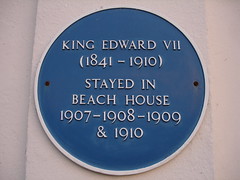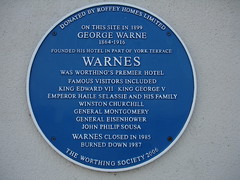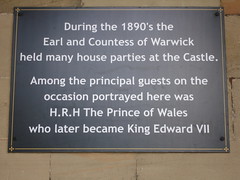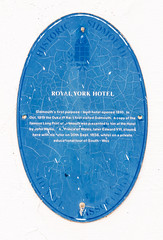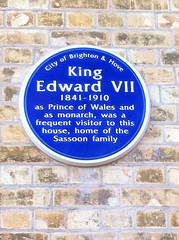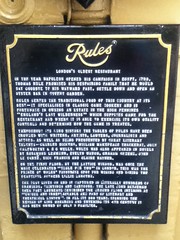

King Edward VII of the United Kingdom
(1841-1910)
Prince of Wales (1841-1901) and King of the United Kingdom (1901-1910)
Family tree
-
Prince Albert of Saxe-Coburg and Gotha (1819-1861) Duke of Saxony
Queen Victoria of the United Kingdom (1819-1901) Queen of the United Kingdom
- King Edward VII of the United Kingdom (1841-1910) Queen Alexandra (1844-1925) Princess of Schleswig-Holstein-Sonderburg-Glücksburg
- Alfred (1844-1900) Duke of Saxe-Coburg and Gotha
- Sir Rt Hon. Prince Leopold KG PC KT (1853-1884) Prince
- Helena Augusta Victoria (1846-1923)
- Victoria Adelaide Mary Louisa , Princess Royal (1840-1901) Princess Royal
Commemorated on 16 plaques
King Edward VII (1841-1910) Stayed in Beach House 1907-1908-1909 & 1910
Beach House, Brighton Road, Worthing, United Kingdom where they stayed
On this site in 1899 George Warne 1864-1916 founded this hotel in part of York Terrace Warnes was Worthing's premier hotel famous visitors included King Edward VII King George V Emperor Haile Selassie and his family Winston Churchill General Montgomery General Eisenhower John Philip Sousa Warnes closed in 1985 burned down 1987
Marine Parade, Worthing, United Kingdom where they visited
During the 1890's the Earl and Countess of Warwick held many house parties at the Castle. Among the principal guests on the occasion portrayed here was H.R.H The Prince of Wales who later became King Edward VII
Warwick Castle, Warwick, United Kingdom where they visited
Site of the first United States transatlantic wireless telegraph station built in 1901-1902. Marconi Wireless Telegraph Company of America predecessor of RCA transmitted January 19, 1903 the first U.S. transatlantic wireless telegram addressed to Edward VII King of England by Theodore Roosevelt President of the United States of America
Wellfleet, Provincetown, Cape Cod, MA, United States where they received
This Guildhall stands on the site used for the Guild, or Fraternity, of Citizens established in 1387 by Richard II, which Guild continued for 161 years under 9 Monarchs, and was finally dissolved under Edward VI, in 1548. The present building was erected in 1846, by the Trustees of the Lichfield Conduit Lands, to whom the ancient Guild, in the year 1545, gave valuable properties out of their possessions to supply the citizens with water, and for their common weal. Her late Most Gracious Majesty, Queen Victoria, visited this City in 1832, and again in 1843. In 1894, His Majesty, King Edward VII, (as Prince of Wales), was received here on the Occasion of the Centenary of the Queen's Own Royal Staffordshire Yeomanry Cavalry.
The Guildhall, Bore Street, Lichfield, United Kingdom where they was (1894)
Langtry Manor Hotel Built 1877 as the Red House for the socialite, beauty and actress Lillie Langtry "The Jersey Lilly" (1853-1929) Edward Prince of Wales (later King Edward VII) provided this residence to which he was a frequent visitor
Derby Road, Bournemouth, United Kingdom where they frequently visited
The Unicorn Hotel. This ancient coaching inn was much used for meetings and entertainments in Georgian times, and was later patronised by Edward VII when Prince of Wales. One landlord, Robert Collinson, was four times Mayor (1876-80).
Unicorn Hotel, Ripon, United Kingdom where they was
Royal York Hotel. Sidmouth's first purpose built hotel opened 1810. In Oct. 1819 the Duke of Kent first visited Sidmouth. A copy of the famous Long Print of Sidmouth was presented to him at the hotel by John Wallis. The Prince of Wales, later Edward VII, stayed here with his tutor on 30th Sept. 1856, whilst on a private educational tour of South West.
The Esplanade, Sidmouth, United Kingdom where they stayed (1856)
King Edward VII 1841-1910 as Prince of Wales and as monarch, was a frequent visitor to this house, home of the Sassoon family
8 King's Gardens, Hove, United Kingdom where they visited
Rules London's Oldest Restaurant In the year Napoleon opened his campaign in Egypt, 1798, Thomas Rule promised his despairing family that he would say goodbye to his wayward past, settle down and open an oyster bar in Covent Garden. ... On the first floor, by the lattice window, was once the most celebrated table for two in London, this was the Prince of Wales' favourite spot for wining and dining the beautiful actress Lillie Langtry
35 Maiden Lane, WC2E 7LB, London, United Kingdom where they wined and dined
Town Hall. Chester town hall was opened in 1869 by the Prince of Wales, later King Edward VII. The architect was W.H. Lynn of Belfast, whose design was chosed in a competition. It replaced the exchange building of 1698 which stood in the centre of Northgate street and burnt down in 1862.
Chester Town Hall , Northgate Street, Chester, United Kingdom where they opened
The quadrica surmounting this arch was presented to the nation as a mark of deepest loyalty and respect to his late revered Majesty Edward VII by Herbert First Baron Michelham of Hellingly KCVO.
Wellington Arch, Hyde Park Corner, London, United Kingdom where they is commemorated (1912)
The Guildhall is an imposing Victorian Gothic building designed (1861-4) by E. W. Godwin and extended on the west by Jeffery and Holding (1889-91). It succeeded the Old Town Hall which for 500 years stood on the corner of Abington Street and Wood Hill. The statues and mural panels illustrate almost every important personage, craft and event in Northampton's history, from Saxon time and the Danish invasion, to the more welcome arrival from Denmark of Princess Alexandra in 1863 to marry the heir to the British throne (later King Edward VII).
2 Saint Giles' Square, Northampton, United Kingdom where they was
Here rested from May 17 until interment at Windsor May 20 1910 Edward VII. King of Great Britain and Ireland & of the British Dominions beyond the seas: Emperor of India
Westminster Hall, London, United Kingdom where they lay in state (1910)
King Edward the Seventh's Galleries. This stone was laid by His Majesty King Edward the Seventh on the twenty-seventh day of June in the seventh year of his reign
British Museum, Montague Place, London, United Kingdom where they was
In 1819-20 This house called Woolbrook Glen was occupied by the Duke & Duchess of Kent & the infant Princess Victoria now Queen of England Empress of India. It was also visited by H.R.H. Prince of Wales in 1856 and by H.R.H. The Duke of Edinburgh in 1881. H.R.H. The Duchess of Kent visited Sidmouth on 23 September 1986
Glen Road, Sidmouth, United Kingdom where they stayed (1856)
